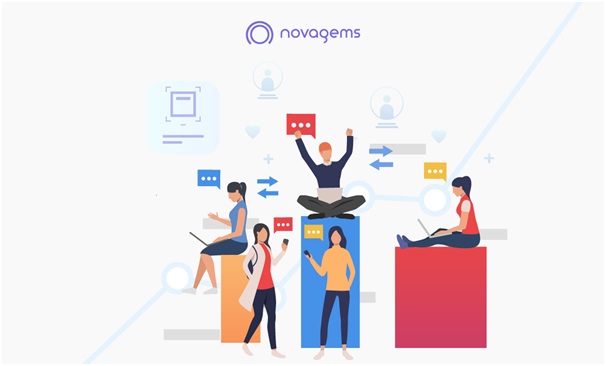Reducing Employee Turnover with Effective Workforce Management Solutions

Employee turnover is a persistent challenge faced by businesses across industries. It not only disrupts operations but also incurs significant costs in recruitment, training, and lost productivity. To tackle this issue effectively, businesses are increasingly turning to workforce management solutions. This article explores how these solutions can humanize the workplace by improving employee satisfaction, engagement, and retention.
Understanding Workforce Management Solutions
Workforce management solutions encompass a range of tools and strategies designed to optimize the deployment, scheduling, and management of employees. These solutions typically include features such as scheduling automation, time and attendance tracking, performance management, and employee self-service portals. By streamlining these processes, businesses aim to enhance operational efficiency and create a more supportive work environment.
The Human Impact of High Turnover Rates
High turnover rates can take a toll on both employees and employers. For employees, frequent turnover disrupts team dynamics, reduces morale, and creates uncertainty about job security. On the other hand, employers face increased recruitment costs, decreased productivity during training periods, and potential negative impacts on customer service and company reputation.
How Workforce Management Solutions Help
- Improved Scheduling and Flexibility
Workforce management solutions enable businesses to create more predictable and flexible schedules that align with employee preferences and availability. By empowering employees to have a say in their schedules, businesses can enhance work-life balance and reduce burnout, leading to higher job satisfaction and lower turnover rates.
- Enhanced Communication and Transparency
Clear communication is essential for fostering a positive work environment. Workforce management solutions provide platforms for transparent communication regarding schedules, tasks, and performance expectations. This transparency builds trust between employees and management, reducing misunderstandings and enhancing overall job satisfaction.
- Empowerment Through Self-Service Tools
Employee self-service portals offered by workforce management solutions allow employees to manage their own schedules, request time off, and access important information such as pay stubs and performance feedback. This empowerment not only saves time for both employees and managers but also increases job satisfaction by giving employees more control over their work lives.
- Recognition and Reward Programs
Effective workforce management solutions often include features for recognizing and rewarding employee achievements and milestones. Whether through performance-based bonuses, peer recognition programs, or personalized incentives, these initiatives contribute to a positive work culture where employees feel valued and motivated to contribute their best efforts.
- Training and Development Opportunities
Investing in employee development is crucial for retention. Workforce management solutions can track employees’ skills, certifications, and training needs, facilitating targeted development plans. By offering opportunities for growth and advancement, businesses demonstrate their commitment to employee success and loyalty.
Real-World Benefits of Workforce Management Solutions
Case Study: Improving Employee Retention in Retail
A national retail chain implemented a workforce management solution that allowed employees to input their preferred shifts and provided real-time scheduling updates. This approach reduced scheduling conflicts, improved employee satisfaction, and significantly lowered turnover rates. The ability to swap shifts easily and receive timely notifications increased engagement and job satisfaction among employees.
Case Study: Enhancing Operational Efficiency in Healthcare
A large hospital system adopted a comprehensive workforce management solution to streamline staff scheduling, manage certifications, and track overtime. By automating these processes, the hospital improved staff morale, reduced burnout, and saved considerable time and resources previously spent on manual scheduling. As a result, employee turnover decreased, and patient care quality improved due to more satisfied and engaged staff.
Evaluating the Return on Investment (ROI)
Cost vs. Benefit Analysis
Implementing workforce management solutions involves initial costs for software licenses, training, and possibly hardware. However, the long-term benefits in terms of reduced turnover costs, improved productivity, and enhanced employee satisfaction often outweigh these expenses. Businesses should consider the potential ROI from increased operational efficiency and employee retention when making investment decisions.
Long-Term Sustainability
Workforce management solutions contribute to the long-term sustainability of businesses by creating a supportive and engaging work environment. As businesses grow, these solutions can scale to accommodate expanding workforce needs while maintaining efficiency and employee satisfaction. This scalability is crucial for adapting to industry changes and maintaining competitive advantage.
Conclusion
Reducing employee turnover is not just about implementing tools and processes—it’s about humanizing the workplace and prioritizing employee well-being. Workforce management solutions play a pivotal role in achieving these goals by improving scheduling flexibility, enhancing communication, empowering employees, and fostering a culture of recognition and development.
By investing in effective workforce management solutions, businesses can create a positive work environment where employees feel valued, motivated, and committed to long-term success. Ultimately, the financial benefits of reduced turnover and increased productivity underscore the importance of these solutions in achieving sustainable growth and competitiveness in today’s dynamic business landscape.
Akshay Sharma
Latest posts by Akshay Sharma (see all)
- Best Single Door Fridge Models Of 2025 Features, Energy Ratings & Price Guide - December 22, 2025
- 5 Critical Things You Must Know for Professional Custom Badge Quality: An Expert’s Guide - November 3, 2025
- Are You Using a Loan Calculator for Second Hand Car Rightly? - October 13, 2025
- Round Steel Tanks: Long-Term Solutions for Water Storage - September 19, 2025
- Embrace the Culture: Syna World Hoodie and Syna World Tracksuit UK - September 13, 2025
- What is More Important in A Love Marriage?
- Game On! Integrating Play into Your Online Learning Curriculum
